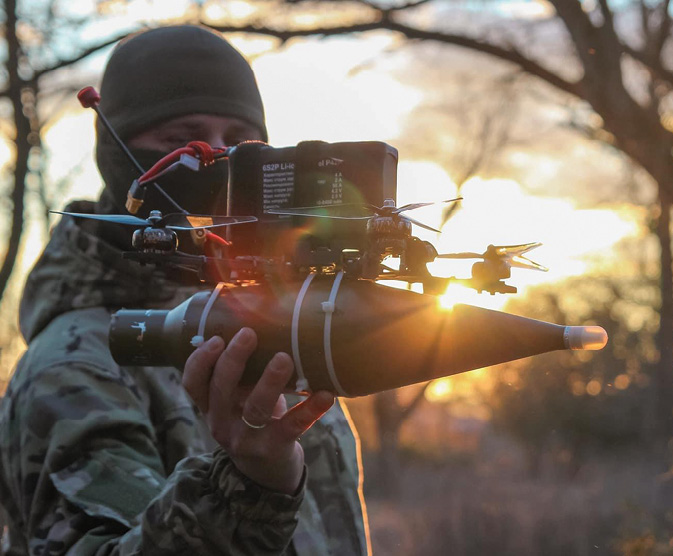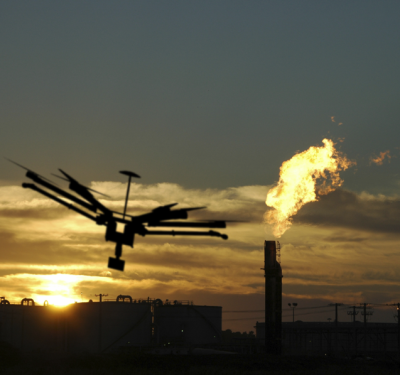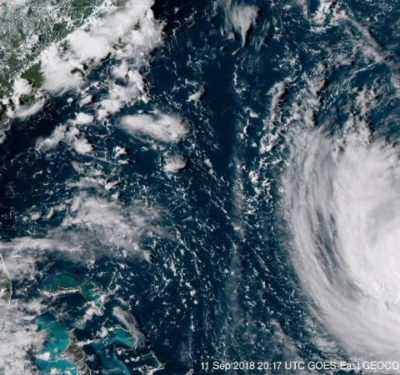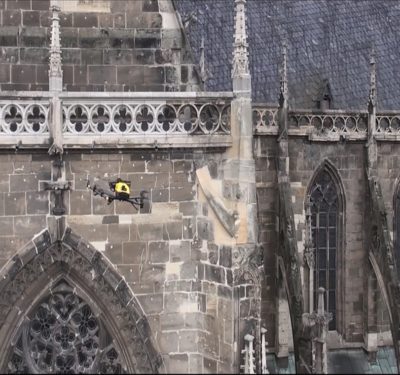First-Person View (FPV) drones have emerged as the major disruptive factor in the war, scrambling assumptions about what constitutes superior force.

Are weaponized First-Person View (FPV) drones one-way attack weapons? Not strictly. FPV usage exploded in 2023 because their design format is cheaper and more easily mass-produced than traditional civilian quadcopters with flexible turret-based sensors. The FPV format is increasingly being applied to non-one-way roles. For example, Ukraine’s Wild Hornets non-profit group pioneered reusable dive-bombing drones releasing 5 pound munitions, which typically survive between 10 and 30 missions before loss.
QUEEN HORNET HEAVY FPV MULTI-ROLE QUADCOPTER
Ukraine’s Wild Hornets group developed the 15″-frame Queen Hornet in three months of fevered R&D based on specifications from the commander of Ukraine’s 54th Mechanized Brigade for a powerful but more attritable FPV medium bomber. It’s intended to fill the gap between small FPV kamikazes and expensive Baba Yaga heavy bombers. The preferred target: entrenched positions built to withstand small FPV munitions.
But as a supersized FPV, the Queen Hornet 21 pound payload has proven useful in many other roles. Its payload capacity enables use for battlefield delivery missions, remote minelaying, comms relay with 15.5 mile range and as a drone carrier hefting two FPV drones, extending their strike range 70-80%. This enables the smaller FPVs to potentially reach more valuable targets like artillery and air defense systems. Wild Hornets builds Queen Hornets for $1,000 each using two-thirds indigenous components, with more than 100 delivered by July 2024 and a like number under assembly. A second-generation Queen Hornet with twice the payload capacity is under development.

UKRAINE’S EW REVOLUTION
By late 2023, Russian FPV production began significantly overtaking that of Ukraine, threatening to redress a key advantage of the Ukrainians. But that winter, both Russian and Ukrainian accounts indicate Ukrainian drone operators somehow implemented new tactics and technology that drastically reduced losses to electronic warfare (EW) in a way Russia was unable to match, restoring Ukraine’s edge.
The extent to which technological solutions enabled this revolution remains a secret, but Russian accounts suggest Ukrainian tactical and organizational reforms played a large part.
“Ukrainian drones are still jammed by Russian systems,” Samuel Bendett, an analyst at CNAS, wrote to IUS. “But it’s likely that Ukrainian intelligence is able to identify Russian jamming frequencies and fly ‘around them’, either below or above them.”
Reportedly, Ukrainian drone operators somehow began implementing coordinated changes to drone control frequencies every few weeks. By the time Russian EW operators recognized the change and re-tuned jamming frequencies, another Ukrainian frequency change would drop, continuing the game of cat-and-mouse.
While Russian EW still causes losses, its effectiveness is allegedly reduced. Meanwhile, Russia’s large VT40 FPV drone inventory reportedly has exhibited limited capacity to evolve frequencies to at least temporarily evade Ukrainian jamming, to the scorn of rival Russian FPV makers.

SAKER SCOUT QUADCOPTER AUTONOMOUS ATTACK UAS
Apparently debuting limited-scale operational use in August 2023, the Scout is one of Ukraine’s earliest known autonomous attack UAS, combining a reusable target acquisition drone that directs attacks by integrated kamikaze FPVs. It’s image-matching algorithm allegedly can identify 64 different types of military equipment, even when camouflaged, and transmits back to the operator the AI’s degree of confidence in the ID and target coordinates.
This reduces the time to pick out targets from visual intelligence, speeding up the kill chain. The operator can then launch FPV drones which the Scout will direct to target. However, Sakers also had already conducted limited numbers of fully autonomous attack missions in Fall 2023.
UI footage show Scout’s vision system tends to flicker over dubious IDs (houses perceived to be tanks) but then rapidly discards the false positives. Scout has a maximum range of 7.5 miles and up to a 6.6 pound payload, which can include an IR camera. It can leverage both inertial navigation and land-marked visual navigation for operations under GNSS-denial.
DRONE AIR-TO-AIR WARFARE COMES OF AGE
The first air-to-air jousts between copter drones over Ukraine date back to 2022, the preferred technique being to ram the adversary’s rotors from above. UAVs generally lack the ability to detect threats approaching from behind and above them.
By that winter, sophisticated Western drone interceptor systems including Fortem’s Drone Hunter, the Anduril Anvil and the MARSS interceptor were actively combat testing in Ukraine. They succeeded in scoring kills of Shahed and Oral drones, though their activities remained shrouded in secrecy with no footage released for public consumption.
In April 2024, Ukraine’s Brave1 drone incubator solicited indigenous interceptor drones able to engage targets traveling at 66-93 mph at altitudes of up to 5,000 feet—initially using externally supplied coordinates at launch but guiding itself upon locating the target.
With startling speed something changed: Soon both sides, but especially Ukraine, released more and more footage of deliberate drone air-to-air kills. Agile FPVs could indeed be optimized to ram and destroy larger, more valuable medium-sized fixed-wing and heavy vertical-lift drones. And finally, following several prior failed attempts, FPV kamikazes downed a Russian Mi-8 helicopter on July 31, then slammed into an Mi-28 attack helicopter in August.
“Both sides are trying to develop organic drone interceptor capabilities,” Bendett told IUS. “This is an emergent capacity, but Russians are saying that Ukrainians already have a system in place to track and target Russian ISR drones, indicating a systemic and front-wide approach to this problem.”
Ukraine’s Wild Hornets group released films showing the downing of 115 Russian fixed-wing drones using a custom-built interceptor costing $725 fitted with special batteries with observed endurance of at least 15 minutes, a camera and a command-detonated warhead. The victims include Lancet kamikazes, and Orlan, Supercam and Zala ISR drones—all many times more expensive. The implied expenditure of $83,375 to kill 115 drones capable of instigating destructive indirect fires is quite a feat falling well short of the price of a single surface-to-air missiles.
Air-to-air drone combat techniques are also reportedly incorporated in some Russian training courses. Russian drone interceptors have particularly focused on Ukraine’s Baba Yaga heavy bombers, with some visibly mounting extended wire spokes to literally skewer enemy drones from behind.
DRONE SUPERIORITY?
Interceptor drones aren’t about to sweep the skies of all threats, but rather play their part in a lengthy battle of attrition. Perhaps in the future armed forces could seek to develop a sufficiently large, distributed and well-organized drone interceptor fleet, integrated with ground-based defenses, that could pursue decisive drone superiority over the battlefield.
However, that may not be possible due to the low-cost, expendable and low-observable qualities of small-to-medium sized UAVs. More immediately achievable might be short-term windows of drone superiority in a specific area, as done in the first few days of Ukraine’s Kursk incursion, to facilitate a time-limited operational objective.
SURRENDERING TO DRONES
Drones are deadly killers—but unlike an artillery barrage or air strike by fast jet, there exists potential for communication between attacker and victim. Soldiers sometimes surrender to drones, a phenomenon first recorded in the 1991 Gulf War. While such incidents occur under ad hoc circumstances, Ukraine’s military has devised procedures to facilitate surrendering to drones, and in some cases literally uses UAVs to lead a surrendering soldier safely to a pre-arranged capture point. Some specially outfitted drones mount speakers and microphones to provide instructions to surrendering enemies. Recently, UAVs reportedly aided the capture of 100 Russian soldiers in Kursk.






